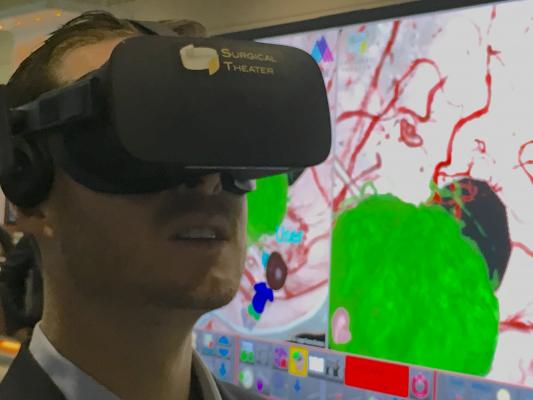
April 4, 2019 — Increasing demand for innovative diagnostic techniques, neurological disorders and increasing disease awareness are expected to drive growth of virtual reality (VR) in the healthcare market over the next several years, according to new research from Reports and Data. The report projects the market will reach a value of $6.91 billion by 2026. Advancements in the field of information technology (IT), including laptop, computer, internet connectivity and mobile applications will also be a significant factor stimulating market demand.
Due to the constant technological advancement of related products, prevalence of neurological and psychological disorders, and presence of a sophisticated healthcare infrastructure, the North America region accounted for the highest market share in 2018 at 44.21 percent. Emerging technological advancements in IT and government support for integration of these technologies in the medical field contribute to a large share of the market, according to Reports and Data. Advantages such as improved flexibility and activity, and being able to deploy new applications more quickly are the major reasons for growth in this region. In the United States, organizations with 100 employees or more are approving cloud-based applications.
Further key findings from the report suggest:
-
Full immersive virtual reality is projected to grow at a compound annual growth rate (CAGR) of 16.58 percent during the forecast period. Different medical training institutes have combined fully immersive VR, medical data and highly advanced medical simulation technologies to enable modern medical education and training globally. This adaptability works as a practical teaching tool today and will continue to do so in the near future, according to Data and Reports. This will serve as an excellent vehicle for promoting the development of VR to the next level of medical practice.
-
The Asia Pacific (APAC) region is estimated to register the highest CAGR of 16.6 percent during the forecasted period. More institutions and organizations in the APAC region are adopting the VR approach. As a result, VR has now become a favored option for modernization.
-
The VR healthcare market is divided into hardware and software. The hardware segment accounted for the largest market share of approximately 65 percent in 2018. The hardware segment is divided into position trackers, semiconductors, cameras, displays, and projectors and sensors, among others.
-
The use of head-mounted displays (HMDs) in applications such as patient care management, medical training, pharmacy management and education would be the primary driver for the growth of HMDs in virtual reality in healthcare. Head-mounted displays are gaining attention due to their applications in training, visualized data, telemedicine, simulation, video recording, telemonitoring and more.
-
Hospitals and clinics accounted for the largest share of 26.1 percent in 2018. This segment is likely to see an improvement in the adoption of VR. Fundamental challenges faced by hospitals and clinics are clinical operations management and data management due to the rising number of patients with chronic diseases and the increasing need for enhanced patient outcomes. Technological changes help healthcare centers develop good service quality by rendering care at low expense with shorter time to service.
-
Fitness management is anticipated to grow at a CAGR of 16.2 percent during the forecast period. Research studies show that VR workouts are so exciting and satisfying to our brains that players are instantly shifted into immersive states that make exercising exciting and feel less tiresome. Several companies have been trying to adopt VR in developing their products.
-
Key participants in the VR healthcare market include Microsoft, Google, Mindmaze, DAQRI, Psious, CAE Healthcare, Medical Realities, Atheer, Augmedix , Oculus VR, Firsthand Technology, Siemens Healthineers, Philips Healthcare, 3D Systems, VirtaMed and Virtually Better.
For more information: www.reportsanddata.com


 December 01, 2025
December 01, 2025 









